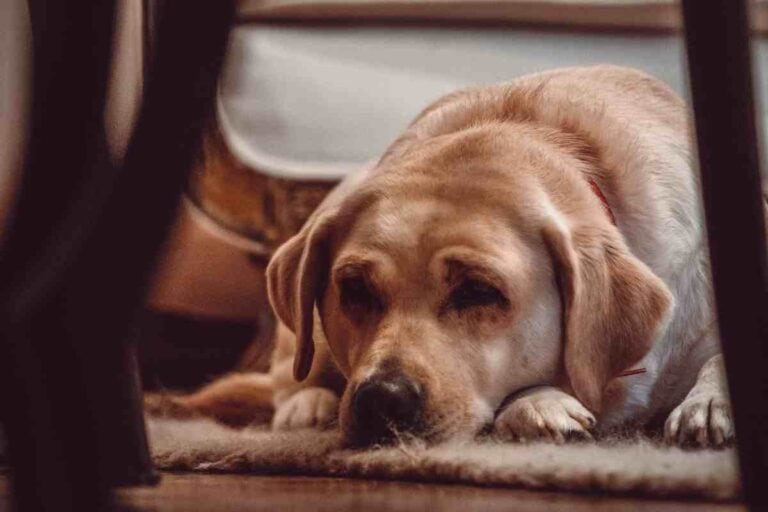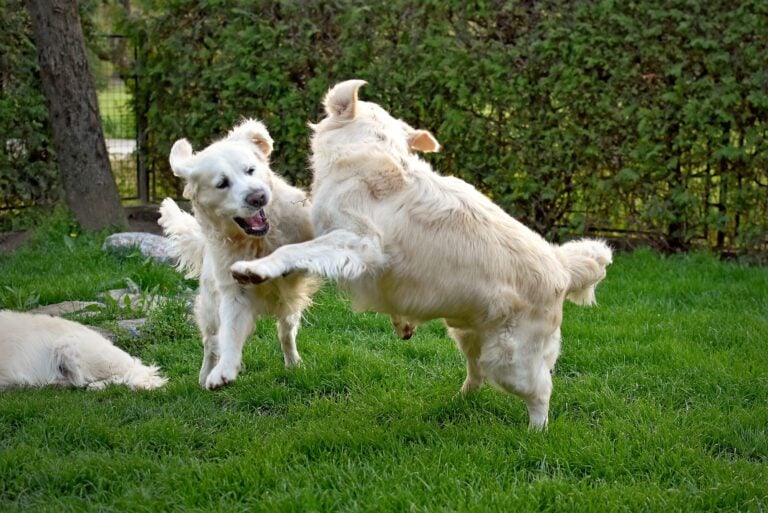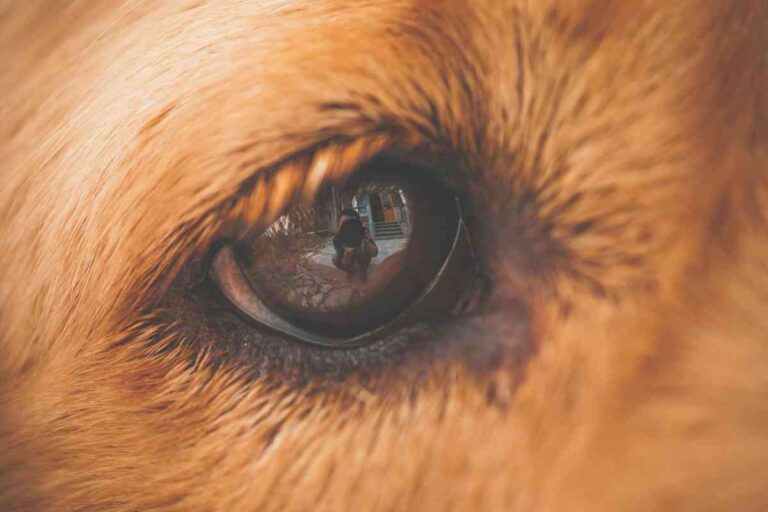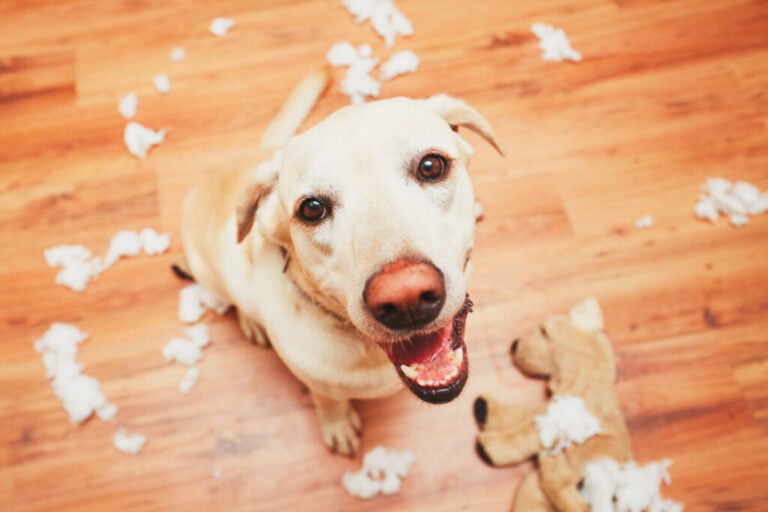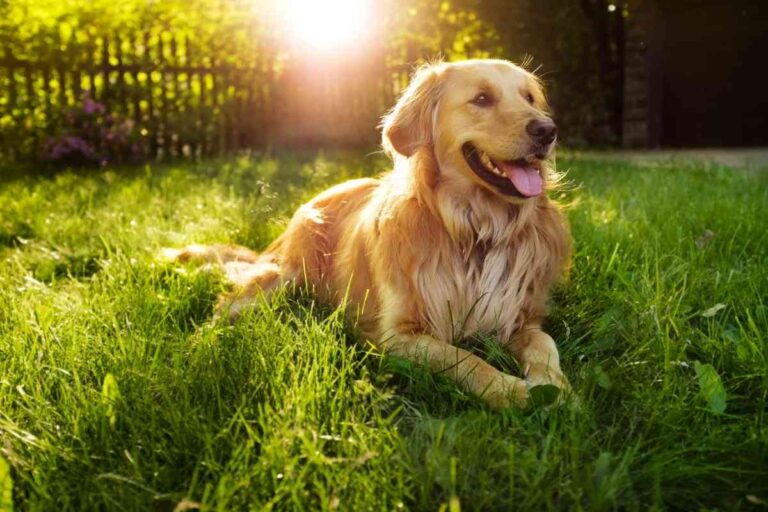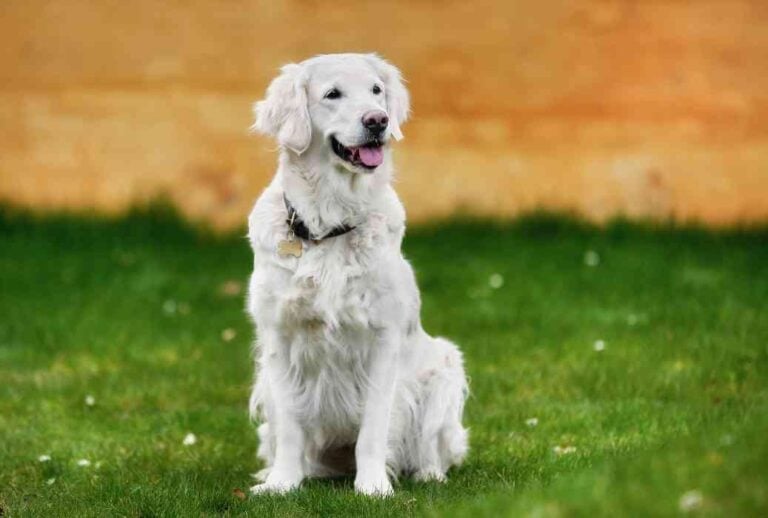9 Dog Breeds That Look Like Golden Retrievers
Looking for dog breeds that look like Golden Retrievers? Wondering if you might be compatible with one of those breeds? There is no mistaking a Golden Retriever. This beloved dog breed is easily recognizable thanks to its signature Golden fur and kind expression. They are gentle, loyal, and make great companions. But what other breeds of dogs look like Golden Retrievers?
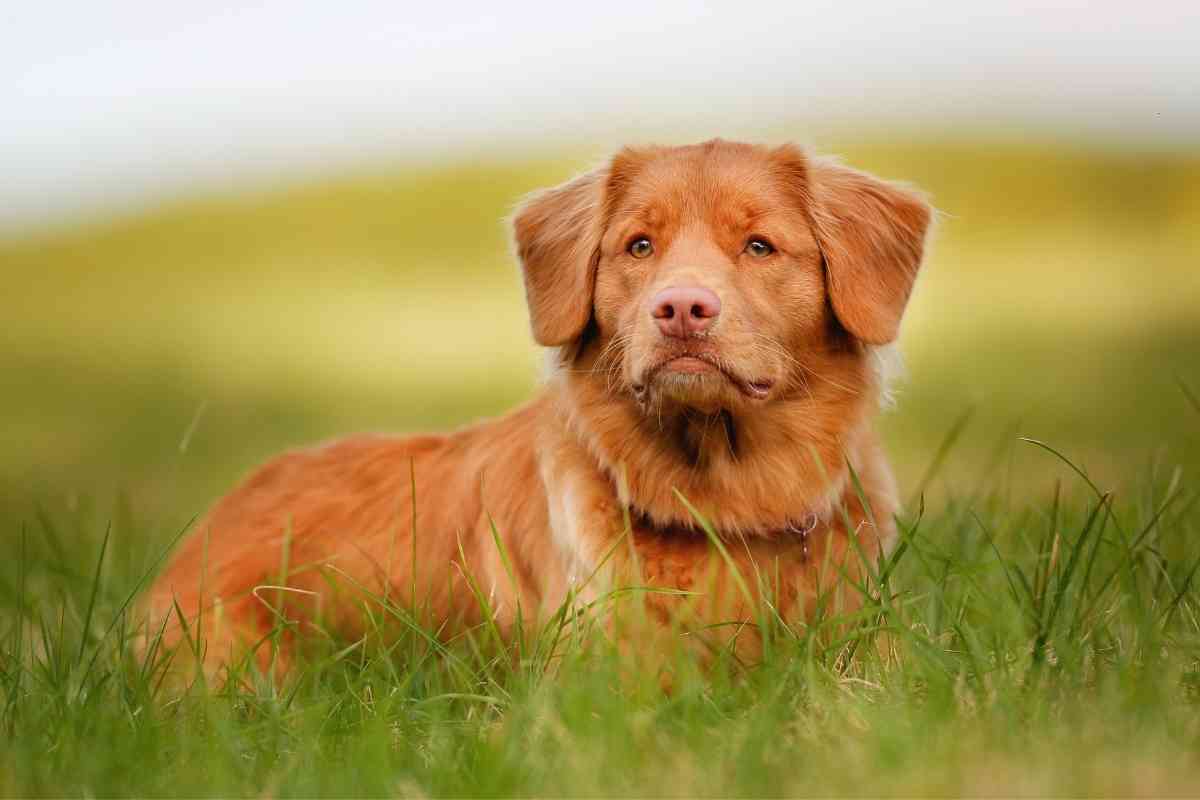
What dog breeds look like Golden Retrievers?
The dog breeds that look similar to the Golden Retriever include Chesapeake Bay Retriever, Labrador Retriever, Irish Setters, Great Pyrenees, Nova Scotia Duck Tolling Retrievers, Leonberger, Flat-Coated Retriever, Bernese Mountain Dog, Gollie, Beagle, and English Springer Spaniel.
Golden Retrievers are one of the most popular pet dog breeds. But if you are looking for something similar, we have got you covered
As dog experts, we know all about dog breeds and which of them are similar to the Golden Retriever. Hence, we have put together this guide to help you shorten your search. Here we will look at some of the most popular dog breeds that share the same physical characteristics as Golden Retrievers.
9 Golden Retriever Lookalike Dog Breeds
Chesapeake Bay Retriever
The Chesapeake Bay Retriever is a large, powerful dog breed originally bred for hunting and retrieving waterfowl. Today, they make great family pets and are known for their loyalty, intelligence, and affectionate nature. If you’re considering adding a Chesapeake Bay Retriever to your family, here’s what you need to know.
The Chesapeake Bay Retriever is one of the oldest American breeds, dating back to the early 1800s. They were developed in Maryland and Virginia, where market hunters used them to retrieve waterfowl from the Chesapeake Bay. These dogs needed to be strong swimmers with a thick coat to protect them from the bay’s cold waters.
The American Kennel Club officially recognized the Chesapeake Bay Retriever in 1878. Today, they are still used for hunting and retrieving, but they also make great family pets.
Chesapeake Bay Retrievers are large dogs, with males standing 23-26 inches tall and females 21-24 inches tall. They have a thick, oily coat, ranging from Golden brown to dead grass yellow. This coat is waterproof and sheds heavily, so regular brushing is necessary to keep the dog’s skin healthy.
Chesapeake Bay Retrievers have a wide head and muzzle, with small, triangular ears that hang close to their head. Their eyes are dark and expressive, and their tails are long and tapering.
Chesapeake Bay Retrievers are loyal, intelligent, and affectionate dogs that make great family pets. They are active and need plenty of exercise, but they are also content to lounge around the house with their family. They are good with children and other pets but may be too energetic for very young kids.
Training a Chesapeake Bay Retriever can be challenging, as they are independent thinkers. However, patience and consistency will eventually pay off, and your dog will be well-behaved in no time. These dogs excel in obedience, agility, and tracking trials.
Chesapeake Bay Retrievers are generally healthy dogs, but like all breeds, they are susceptible to specific health conditions. Most common include hip and elbow dysplasia, eye problems, and skin allergies.
Your Chesapeake Bay Retriever will be by your side for many years with proper care.
Labrador Retriever
The Labrador Retriever is a type of gun dog. The Labrador is one of the most popular dog breeds in the United States. A versatile breed is also used as a working dog in many other roles, such as disability assistance, search and rescue, therapy, and detection dogs.
Labrador Retrievers are relatively large dogs, with males typically weighing around 30–40 kg (66–88 lb) and females 25–32 kg (55–71 lb).
They have an outer coat of short, dense fur which sheds seasonally and an undercoat of softer fur, which they shed all year round. Labradors have well-developed chests, muscular necks, and straight tails. Their eyes are brown, and their ears are set high on their head.
Their jaws are powerful, with a scissors bite in which the teeth meet in a level line. Labrador Retrievers typically have black noses, although some may have brown or liver-colored noses.
Labradors have otter-like tails that can be straight or slightly curved and are covered in short fur that repels water. The feet are webbed, helping the dog to swim. The deep chest is strong, allowing the dog to retrieve heavy objects from the water.
Labradors have a strong working pedigree and were initially bred to help fishermen with reeling in their nets. Today, they are used as assistance dogs for people with disabilities, as well as being trained for various roles in law enforcement and search and rescue. Labrador Retrievers are also popular as family pets and are known for their loyalty, obedience, and friendly nature.
Irish Setters
Irish Setters are a beautiful breed of dog, originally from Ireland. They are well-known for their red fur, which is why they are sometimes called “red setters.” Irish Setters are friendly and outgoing dogs that make great family pets.
They are also very active and need plenty of exercise. If you’re considering getting an Irish Setter, here’s what you need to know.
The exact origins of the Irish Setter are unknown, but it is thought that the breed was developed in Ireland in the early 1800s.
The Irish Setter was bred to be a working dog and used for hunting birds and other small game. The first recorded mention of the Irish Setter was in 1814 in a book called “The Sporting Magazine.”
The Irish Setter was introduced to the United States in the mid-1800s and became a popular breed. In 1878, the American Kennel Club (AKC) recognized the Irish Setter as a distinct breed. The AKC standard for the Irish Setter was developed in 1879.
The Irish Setter was once one of the most popular breeds in America. However, its popularity has declined in recent years. According to the AKC, the Irish Setter ranked 23rd among all breeds in 2015.
Irish Setters are medium-sized dogs that stand 24-28 inches tall at the shoulder and weigh 50-70 pounds. They have a long head and neck and a muscular body. The Irish Setter’s most distinctive feature is its red coat.
The coat can range in color from light Golden red to dark chestnut red. Some Irish Setters have white markings on their chest or feet.
The Irish Setter has long, floppy ears and a long tail that is usually carried level with the back. The breed standard calls for the tail to be docked (cut) to about half its original length. This was once done to prevent injuries when the dogs worked in heavy brush. Nowadays, docking is done primarily for cosmetic reasons.
Irish Setters are considered to be a relatively healthy breed. However, like all breeds, they are susceptible to specific health conditions. These include bloat, hip dysplasia, elbow dysplasia, and cancer.
Irish Setters are friendly, outgoing dogs that make great family pets. They are also very active and need plenty of exercise. Irish Setters are intelligent dogs and can be easy to train. However, they can also be willful and stubborn at times.
The Great Pyrenees
The Great Pyrenees is a large, gentle dog breed that makes an excellent companion. Though calm and good-natured, they are fiercely loyal and protective of their family and home.
Originating in the mountainous regions of France and Spain, the Great Pyrenees was bred to be a working dog, guarding livestock against predators such as wolves and bears. Today, they are still used for this purpose in some parts of the world, but they are just as likely to be found lounging on the couch with their human family.
Standing 28 inches tall at the shoulder and weighing 100 pounds or more, the Great Pyrenees is a formidable presence. But don’t let their size and strength intimidate you – they are gentle giants, known for being calm, patient, and good with children.
Their thick, double coat is one of their most distinctive features. The outer coat is long and coarse, while the undercoat is soft and dense. This combination protects them from both cold weather and predators. The coat can be white, cream or pale gray and is often marked with patches of darker color.
The Great Pyrenees is a calm, patient breed that makes an excellent companion. They are notoriously good with children and are known for being gentle and loving with their families.
Though they are typically calm and good-natured, they are fiercely loyal and protective of their family and home. They make excellent guard dogs, but their size can also intimidate strangers.
The Great Pyrenees is a working dog breed, so they have a lot of energy and need plenty of exercise. A daily walk or run is necessary to keep them happy and healthy. They also enjoy playing fetch or other games that challenge their mind and body.
However, it is not a good candidate for apartment living. They need plenty of space to run and play, and a backyard is ideal. They can also be vocal, so loud barking may not be tolerated in some neighborhoods.
The Great Pyrenees are generally healthy dogs, but like all breeds, they are susceptible to specific health conditions. These include elbow dysplasia, hip dysplasia, bloat, and eye problems. Regular checkups and screenings at the vet can help catch these problems early on.
Nova Scotia Duck Tolling Retrievers
This breed of dog is originally from Nova Scotia, Canada. They were developed in the early 19th century to toll, or lure, ducks into range so that they could be more easily hunted. The breed is still used for this purpose today but is also kept as a companion animal.
Nova Scotia Duck Tolling Retrievers are medium-sized dogs with a thick coat of reddish-brown fur. They have long tail that often curls over their back and webbed feet, making them excellent swimmers.
They are intelligent and energetic dogs that require regular exercise and training.
This breed is not for everyone, and it is vital to ensure that you are prepared to provide the dog with the exercise and attention it needs. However, if you are looking for an active and affectionate companion, a Nova Scotia Duck Tolling Retriever may be the perfect dog for you if you are looking for an energetic and loving companion.

Leonberger
The Leonberger is a large, muscular dog from Leonberg city in Baden-Württemberg, Germany. The breed was created in the 19th century to be a working dog that could resemble a lion, hence its name.
Today, the Leonberger is not typically used as a working dog but is kept as a loyal and gentle companion. They make great family pets as they are good with children and other animals.
Leonbergers are large dogs, with males weighing around 170 pounds (77 kg) and females averaging about 150 pounds (68 kg). They have a thick coat of fur that can be either red, yellow, or tan and often have a black mask around their face.
This breed is known for being intelligent, playful, and loyal. They require a lot of exercise and should be taken on long walks or runs daily. Leonbergers are also relatively easy to train, although they can sometimes be stubborn.
The Leonberger may be a perfect choice if you are looking for a big, friendly dog to add to your family!
Flat-Coated Retriever
The Flat-Coated Retriever is a medium to large, athletic dog breed with a distinctive glossy coat. They are friendly and intelligent dogs that make great family pets but need plenty of exercise and space to run.
The Flat-Coated Retriever may be the right breed for you if you’re looking for an energetic and loving dog!
Originating in England, the Flat-Coated Retriever was originally bred as a gun dog to retrieve game birds from the water. They are still used for hunting today and make excellent companion dogs. The Flat-Coated Retriever is a versatile breed well-suited for many different activities. They excel in obedience and agility trials and make great therapy dogs.
The Flat-Coated Retriever measures 21 to 25 inches at the shoulder and weighs 55 to 80 pounds. They have a long head with a tapered muzzle, dark brown eyes, and floppy ears that hang down close to their cheeks
Their coat is flat and dense, with a soft undercoat and a thick, waterproof outer coat. The coat is black or liver-colored and may have white markings on the chest and feet.
Flat-Coated Retrievers are friendly, outgoing dogs that get along well with people and other animals. They are intelligent dogs that are easy to train. They need plenty of exercise, including daily walks, runs, or hikes. They also enjoy swimming and playing fetch. Flat-Coated Retrievers are relatively easy to groom, but their coat does require regular brushing to prevent mats and tangles.
Bernese Mountain Dog
There are few breeds of dogs as polarizing as the Bernese Mountain Dog. Some people are absolutely in love with their large size, shaggy coat, and gentle personality. Others find them too big and ungainly and worry about their health issues.
However, there’s no denying that the Bernese Mountain Dog is a fascinating breed with a long and interesting history.
The Bernese Mountain Dog is a large breed originating in the Swiss Alps. They were originally bred for farm work, including pulling carts and herding cattle. Today, they are mostly known as companion animals and family pets. They are still used for farm work in some parts of the world, but their main job now is to provide love and companionship.
Bernese Mountain Dogs are large dogs, with males typically weighing around 115 pounds (52 kg) and females around 95 pounds (43 kg). They are strongly built, with a sturdy frame and short, thick legs. Their coat is long and glossy and is usually black with white markings on the chest, muzzle, feet, and tail.
They have a gentle and friendly personality and are known for being great with children. Unfortunately, they also have several health issues that can shorten their lifespan to around six or seven years. These health problems include hip, elbow, bloat, cancer, and joint problems.
If you’re considering adding a Bernese Mountain Dog to your family, it’s important to do your research and be prepared for the challenges of owning a large breed dog.
But if you’re up for the challenge, you’ll be rewarded with a loyal and loving companion who will bring joy to your life.
Gollie
The Gollie dog is a mix between the Golden Retriever and the Collie dog breeds. They are bred to create a hypoallergenic dog that does not shed much hair.
These dogs are friendly, intelligent, and have a lot of energy. They need regular exercise and stimulation to be happy and well-behaved. They are good with children and other pets and make great family dogs.
Gollies can come in different sizes, depending on whether they are bred from a Golden Retriever or a Standard Poodle parent. They can range from small to large, and their coat can be either straight or curly.
Gollies are not the right breed for everyone, requiring a bit of care and attention. But if you are looking for a loyal, loving, and intelligent companion, a Gollie could be the perfect dog.

